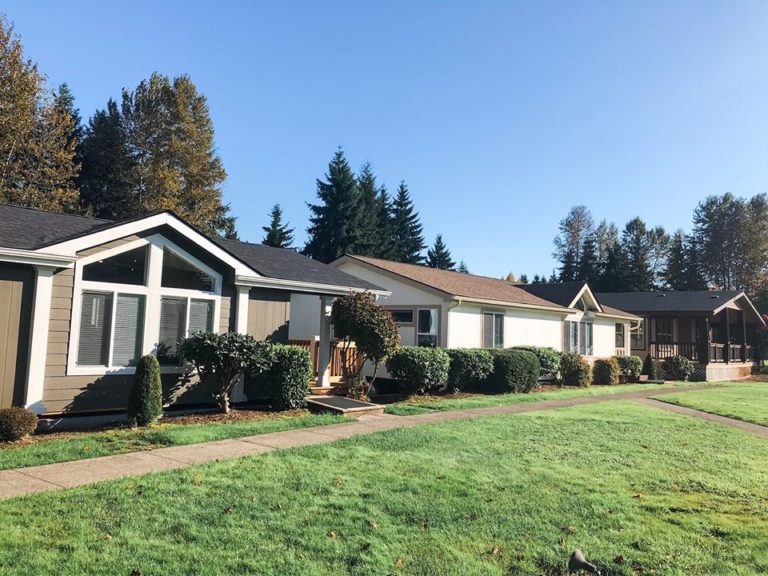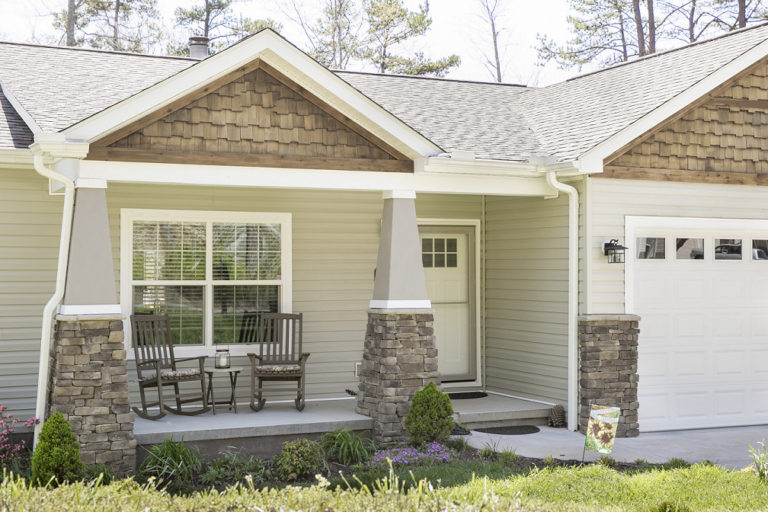Buying a new manufactured home is like building any new home because that’s what you’re doing! In the end you get an affordable custom home built for you.
Most new manufactured homes are placed on the buyer’s own land. That typically means buying the land and home at the same time. You will buy the land, prepare it for the home and purchase the house all with one loan. With this type of purchase, your home becomes real property (as in “real estate”) and is legally tied to your land. This offers more financing options and your home value will increase with the value of your land.
A knowledgeable home sales center will help you through this process and that brings us to the first step.

Start your house hunt by visiting several manufactured home sales centers. Not only do you want to see different homes, you want to find a sales center team that is experienced in land-home packages. Some sales centers help buyers find land and do land development. Others make referrals to trusted Realtors and other experts. Know what services to expect including home delivery and set-up. You will be working with the sales center for several months so pick a team that works for you.
Determine your overall home budget and the amount you can spend on a down payment. Work with a lender to learn what you can afford and get pre-qualified for a loan. Use our worksheet to start developing an expense summary to determine what you may spend on the land, land development and your home. Don’t be overwhelmed—your sales center team will help you!
People on average live in one home for more than 13 years. Will the house meet your needs now and into the future? Consider energy efficient features to save money in the long run. Focus on options that safeguard your investment—from quality roofing to solid foundations. Also remember it’s cheaper to add features now than to remodel later. For example, if a fireplace is important to you, it’s better to add it now. Our home checklist will help you think through your choices!
Work with a Realtor to find property that matches your lifestyle and budget! Manufactured homes can be placed in the city, country and in-between, but as with any home, check the zoning.
Learn if there is water, power and sewer nearby or if you need a well or septic system. Your sales center or development contractor should do a pre-purchase feasibility study to make sure your home will fit on your land and development is practical and affordable.
As you are planning your land development, also decide on the type of home foundation and skirting you will use. Finally, consider the home’s placement to give you the best layout for the driveway, doors and even windows to capture good views.
Wait – shouldn’t that come sooner? When you’re determining your budget (Step 2) you should have gotten pre-qualified for your loan with a lender of your choice, but the financing package doesn’t come together until you have selected your home and land and have factored in all the possible land development costs. This is when the paperwork goes in and, once the loan is approved, payments will be made for the home, land and land improvements.

Your land will be developed into a homesite with a driveway, foundation, water, electricity, sewer, cable/phone and possible additions like a garage or deck. Don’t forget to budget for landscaping around your new home.

Your home will arrive in one or more sections to be skillfully placed, bolted together and secured to the foundation by a state certified installer. This part seems like magic with a new home appearing overnight!
Final touches will be made to everything from the floor to the roof and utilities will be hooked up. A local building inspector will check the home and site work before you can move in. Read more about home installation here. Once the house is set up you will have an opportunity to go through it carefully, ask questions and ensure everything is to your satisfaction.
Congratulations! After you move in, keep your home in tip top shape with simple maintenance such as regular gutter cleaning to prevent water damage. Your homeowners’ manual will give you important information about your home. Find more tips here.